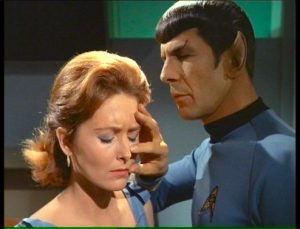
Every five years, breed clubs can suggest changes to their breed’s standard, though such changes are infrequent. In theory, this is supposed to ensure that a standard isn’t altered simply to accommodate what’s being bred by any one breeder, though seasoned dog people may stifle a cough at this.
The purpose of a breed standard isn’t just to provide a written blueprint of what a breed should be, it’s also to keep breeders (and judges) on the same page about what a breed should be. Different clubs go about the business of writing a standard very differently from each other: The Dachshund standard is very detailed, while the Puli standard mentions the word, “medium,” eight times. As of a year ago, the Coton de Tulear had the longest breed standard of any AKC breed (at 2,287 words), while the Greyhound has the shortest breed standard by word count at 223 words (followed by the Lhasa Apso with 231).
The AKC recommends that text of a breed standard must be as clear and concise as possible, but we’re told that the Saluki standard, for example, is so short that students of the breed consult a variety of sources to help them better understand correct Saluki breed type.
Are standards subject to interpretation? You bet. “Medium,” in the Puli standard can certainly mean different things to different  people, as can words like “slight,” “excessive” and “sufficient.” Specificity is always welcomed: The Plott is the only breed we’re aware of that has a breed standard specifically allowing the presence of an identification mark on its rump used to identify the dog when out hunting – perfectly understandable. The Dandie Dinmont Terrier standard, meanwhile, says that the ideal body shape is “weasely” and that the coat should be “piley” and “penciled.” Learning the meanings of those definitions in the year 2017 is a bit more challenging which is why veterans in any breed should be honored, and then subjected to a Vulcan Mind Meld to glean everything they know in an instant.
people, as can words like “slight,” “excessive” and “sufficient.” Specificity is always welcomed: The Plott is the only breed we’re aware of that has a breed standard specifically allowing the presence of an identification mark on its rump used to identify the dog when out hunting – perfectly understandable. The Dandie Dinmont Terrier standard, meanwhile, says that the ideal body shape is “weasely” and that the coat should be “piley” and “penciled.” Learning the meanings of those definitions in the year 2017 is a bit more challenging which is why veterans in any breed should be honored, and then subjected to a Vulcan Mind Meld to glean everything they know in an instant.
Too, things get dicey when worlds collide. Listed in the AKC guidelines for writing standards is the reminder of the importance of keeping in mind not only the qualities that make a breed unique, but the qualities the breed needs to do the job for which it was created. Sadly, divisions between field and conformation dogs exist in some breeds, and in our perfect world, there would be a meeting of minds in these breeds.
Another NPDD post on reading clues in a breed standard is here.
Our Afghan Hound breed standard is created by the clever Lindsay at “Not to Standard.” You can find more of her hilarious breed “standards” here.
